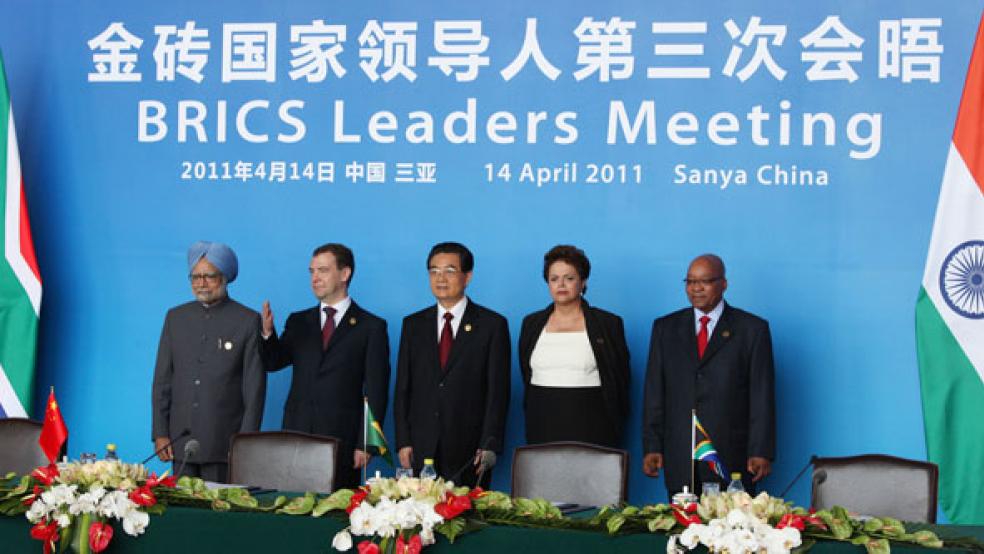Investors recently marked the tenth anniversary of the birth of the first big acronym in the world of emerging market investments. BRIC – standing for Brazil-Russia-India-China – was the brainchild of Jim O’Neill, currently chairman of Goldman Sachs Asset Management. The acronym may have been conceived as a way to capture in a single phrase the changing realities of the emerging markets, but it has morphed into an investment strategy in its own right, spawning ETFs and mutual funds dedicated to investing in those economies.
The premise behind the BRIC phenomenon remains solid; indeed, there seems even less reason today to challenge the logic of O’Neill and his team. As they argued back in 2001, this group of emerging market nations – collectively offering favorable demographics, economies and financial markets that were becoming more integrated with those of the developed world – will overtake Europe, Japan and North America as the world’s dominant economic “bloc” by 2050. Brazil and Russia, O’Neill and his team argued, would overshadow the rest of the world’s commodity producers; China and India would emerge as consumer powerhouses as incomes jump and a real middle class emerges in both nations.
But what began as a useful prism through which to view an investment trend has begun to run amok. BRIC is often used as a shorthand way of describing the ways that these emerging nations forge political and trade agreements with each other, and some media reports even refer to the “enlargement” of the group through the “admission” of countries like South Korea and South Africa (thus making it BRICKS), as if we were talking about a formal political and trade grouping like the European Union rather than a concept that originated in the fertile brains of an investment bank’s strategist.
Perhaps the least helpful development in the last decade, however, has been in the original context of “BRIC” – building an investment portfolio. It’s one thing to develop a framework for pondering the massive changes taking place in this universe in a manner that is both intellectually sound and easy to grasp. But not all clever concepts make for great investment themes.
Investing in emerging economies (or, as O’Neill now prefers to label his BRIC nations, “growth” economies) shouldn’t boil down to which acronym you adhere to – BRIC, or BRICKS, or VISTA (Vietnam, Indonesia, South Africa, Turkey and Argentina) or N-11 (the next 11, another GSAM concept). Top-down concepts of this kind might be an efficient way to access a highly liquid and efficient market segment, but the one element that most closely links these emerging markets is that they still aren’t as liquid and efficient as their developed counterparts. They may have stable political systems, solid government finances and tremendous demographics, but they offer wildly different levels of development when it comes to their institutions.
In Russia, for instance, investors routinely deplore the fact that the rule of law in the corporate domain takes a back seat to bribery and corruption (and let’s not talk about what happens to business oligarchs who become too powerful…). Russia and Brazil produce some of the commodities that China can’t get enough of; Russia’s population is far older than that of China and India. When you look across acronyms, the discrepancies become even more glaring: while China may be financing the rest of the world’s debt habit, Turkey has a budget deficit and a current account deficit.
Ultimately, the BRIC idea groups together a disparate assortment of nations in such a “buzzy” way that it becomes all too easy for an investor to overlook important risks. For starters, equal-weighting all four BRIC nations in a fund means putting a big bullish bet on commodities, given the extent to which Russian and Brazilian markets are tied to the fate of commodities. And if you do believe that commodities markets are about to revive, why not think about countries like Kazakhstan or South Africa?
The BRIC idea played a very important part at a crucial turning point, reminding us that the balance of power among different national economies rarely remains static and unchanged, and that the odds favor these nations dominating the landscape in the 21st century. A decade later, it would be hard for any moderately well-informed investor to overlook these trends. (We are already seeing China take its place in the spotlight; O’Neill himself recently calculated that Chinese GDP could top that of the U.S. within the next 15 years.)
What would be more useful for investors today than another emerging markets acronym is an investment program that helps them winnow through all the companies in these markets and understand which offer the best combination of risk, return and exposure to emerging markets fundamentals. If Chinese growth slows, which companies are more vulnerable, and which Vietnamese companies are best positioned to thrive despite that slowdown? Those are the kinds of investment questions that should dominate our minds, not whether to hunt down an ETF based on the hottest new acronym.




